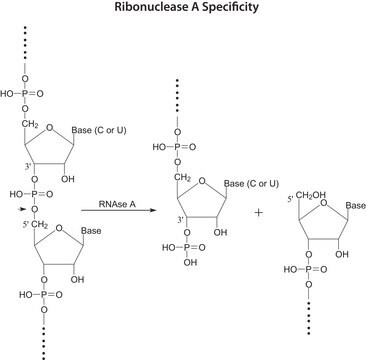S2889
Sodium acetate
anhydrous, for molecular biology, ≥99%
Synonym(s):
Acetic acid sodium salt
About This Item
Recommended Products
grade
Molecular Biology
anhydrous
for molecular biology
Quality Level
Assay
≥99%
form
solid
autoignition temp.
1112 °F
pH
8.5-9.9 (25 °C, 246 g/L)
pKa
4.76 (acetic acid)
mp
>300 °C (dec.) (lit.)
solubility
H2O: 100 mg/mL
foreign activity
DNase, RNase, protease, none detected
SMILES string
[Na+].CC([O-])=O
InChI
1S/C2H4O2.Na/c1-2(3)4;/h1H3,(H,3,4);/q;+1/p-1
InChI key
VMHLLURERBWHNL-UHFFFAOYSA-M
Looking for similar products? Visit Product Comparison Guide
Related Categories
Application
- Evaluating acetate as a renoprotective agent following kidney ischemia in a porcine model.: This study explores the use of sodium acetate as a renoprotective agent to mitigate kidney damage following ischemia, highlighting its potential therapeutic applications in renal protection (Kominsky HD et al., 2024).
- Chitosan-PVA-PVP/nano-clay composite: a promising tool for controlled drug delivery.: Sodium acetate plays a crucial role in the synthesis of chitosan-based nanocomposites for controlled drug delivery systems, demonstrating its significance in pharmaceutical applications (Ali M et al., 2024).
- Direct Affinity Ligand Immobilization onto Bare Iron Oxide Nanoparticles Enables Efficient Magnetic Separation of Antibodies.: Sodium acetate is utilized in the immobilization process of affinity ligands onto nanoparticles for efficient magnetic separation, highlighting its role in biochemical separations and diagnostics (Zimmermann I et al., 2024).
Storage Class Code
11 - Combustible Solids
WGK
WGK 1
Flash Point(F)
Not applicable
Flash Point(C)
Not applicable
Personal Protective Equipment
Regulatory Listings
Regulatory Listings are mainly provided for chemical products. Only limited information can be provided here for non-chemical products. No entry means none of the components are listed. It is the user’s obligation to ensure the safe and legal use of the product.
JAN Code
S2889-250G:4548173210339
CR211623:
S2889-BULK:
S2889-VAR:
S2889-1KG:4548173210322
S2889-5KG:4548173210346
S2889-EW:
Choose from one of the most recent versions:
Already Own This Product?
Find documentation for the products that you have recently purchased in the Document Library.
Customers Also Viewed
Our team of scientists has experience in all areas of research including Life Science, Material Science, Chemical Synthesis, Chromatography, Analytical and many others.
Contact Technical Service





